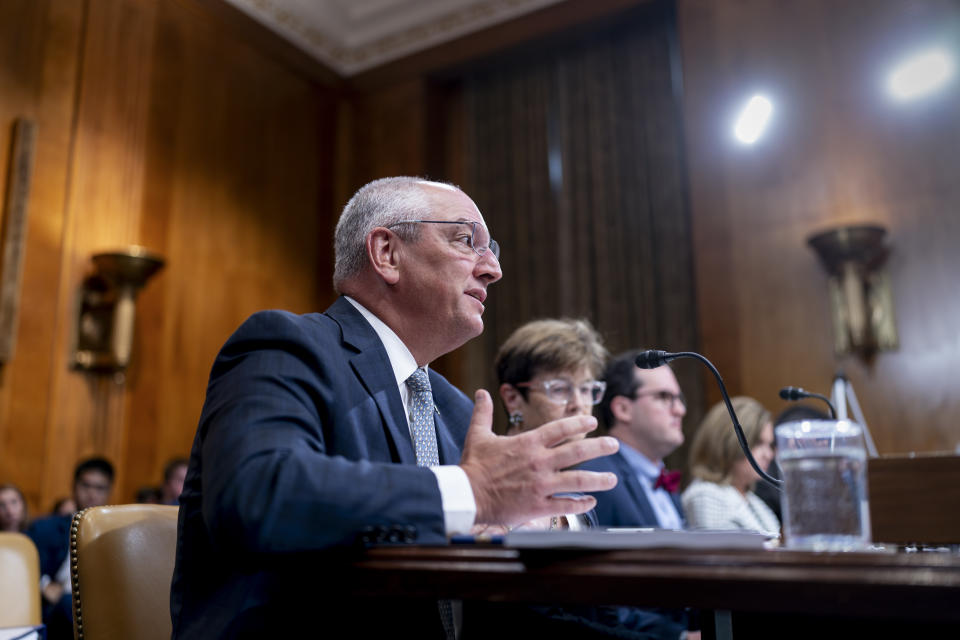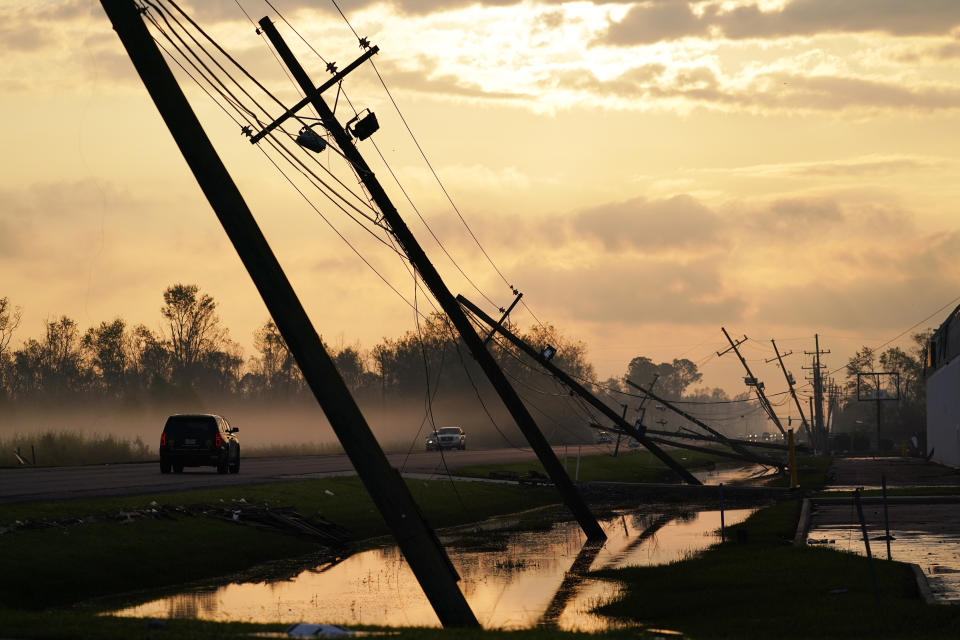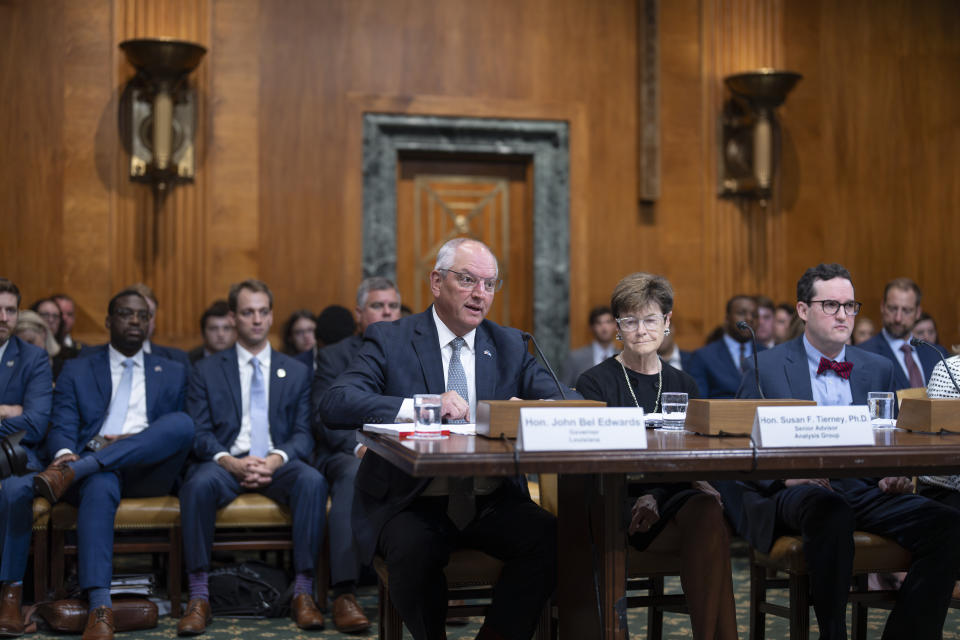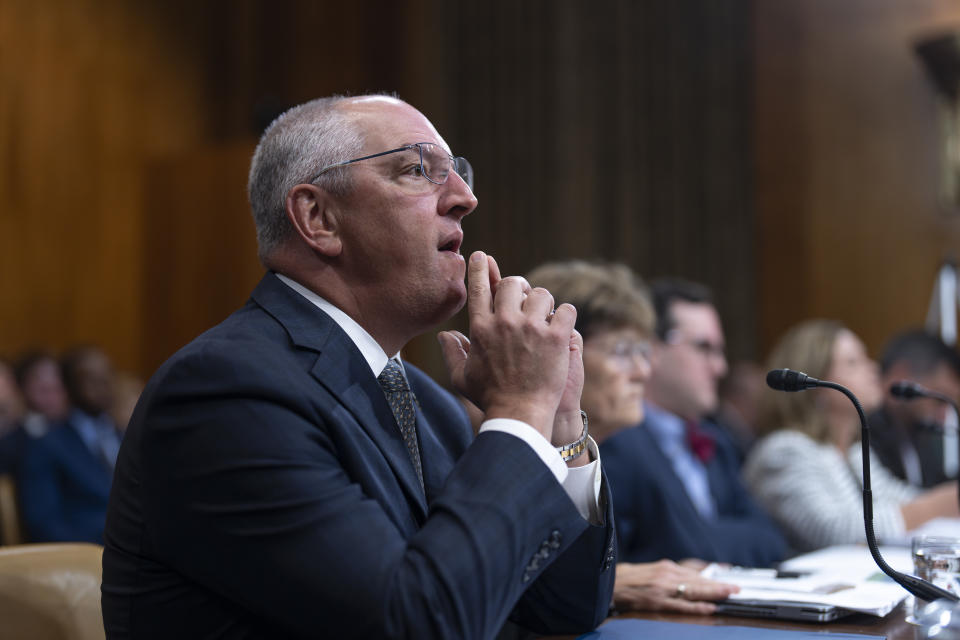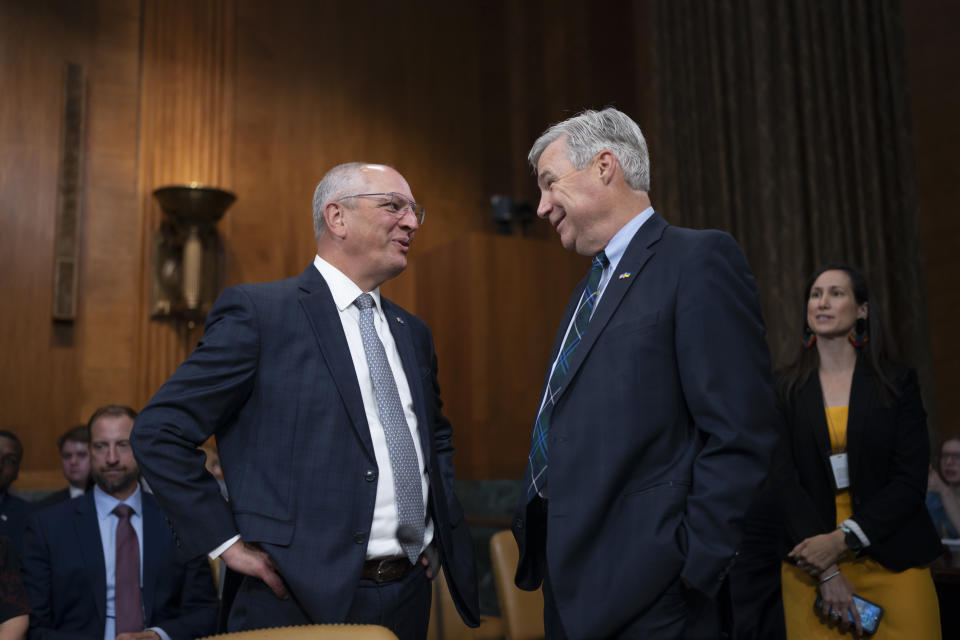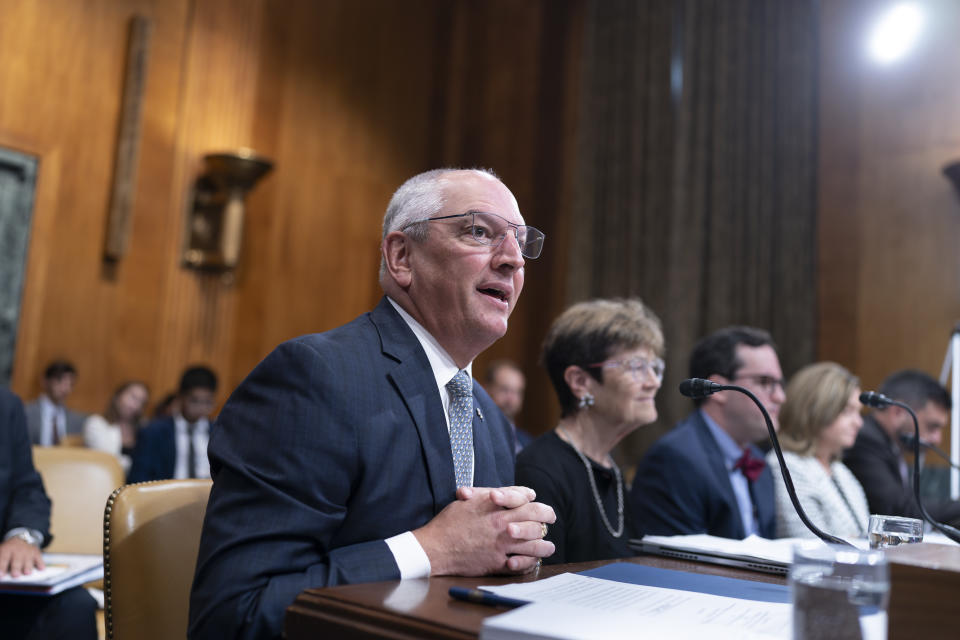US legislators turn to Louisiana for experience on climate change impacts to infrastructure
- Oops!Something went wrong.Please try again later.
BATON ROUGE, La. (AP) — This summer — as blistering heat waves scorched the Southwest, wildfire smoke from Canada choked much of North America, a drought in the central U.S. devastated soybean and corn crops, and storms flooded parts of the Northeast — the perils of climate change weigh heavily across the country.
While the human toll of these extreme weather events is at the forefront, the cost burden and questions about how to prepare for the future are also being considered.
Lawmakers on the U.S. Senate Committee on the Budget sat down Wednesday to discuss the fiscal impacts of climate change on the nation’s infrastructure. They turned to Louisiana for its hard-earned expertise.
Gov. John Bel Edwards provided testimony on the struggles the often hurricane-riddled Deep South state has incurred and what investments have been made in attempt to protect infrastructure, avoid catastrophe and decrease preventable deaths.
“We’ve experienced significant devastation in our recent history — from hurricanes, floods, sea level rise, subsidence, coastal land loss, habitat degradation and extreme heat,” Edwards said about Louisiana. “Because we’ve been tested more than anywhere else in the country, Louisiana has gone to great lengths to increase the resilience of our communities, our economy and our ecosystems.”
Extreme weather events have made news around the globe, with scientists pointing to human-caused climate change. Over the past two decades, Louisiana has had a front-row seat to the impacts of climate change, with hurricanes making landfall more frequently, coastal areas being eaten away by erosion, subsidence and rising sea levels, and the Mississippi River reaching record-low water levels, causing barges with agricultural exports to get stuck. In addition the state, which shares its southern border with the Gulf of Mexico, has tens of thousands of jobs tied to the oil and gas industry.
In 2020, five storms — including hurricanes Laura and Delta — struck Louisiana. The damage totaled between $20 billion and $50 billion, according to the National Oceanic and Atmospheric Administration. The next year, Hurricane Ida and Tropical Storm Claudette left behind $50 billion to $100 billion worth of damage. The storms also accounted for hundreds of deaths.
“What is tough to think about is that there were investments that could have been made that would have prevented much of the cost and human toll," Edwards said. “We as a nation simply must make more of those types of investments. Louisiana learned this the hard way when Hurricanes Katrina and Rita hit in 2005.”
Hurricane Katrina’s overall damage was about 193.3 billion in current dollars, making it the costliest storm in U.S. history, according to NOAA. Levee failures pushed Katrina’s death toll to more than 1,800.
Since then, Louisiana has made efforts to protect the state from the seemingly inevitable consequences of climate change. Louisiana leaders created a coastal plan that calls for spending $50 billion over the next half century for coastal restoration, flood protection projects and to reduce annual storm surge damage by as much as $15 billion. Part of this plan includes building levees, floodwalls and gates and creating speed bumps of slightly higher land within marsh and wetland areas to reduce erosion and slow storm surges.
Louisiana is in the midst of additional investments as well: The state is about to break on the Mid-Barataria Sediment Diversion project, designed to reconnect the Mississippi River with the Barataria Basin to create as much as 21 square miles of wetlands by 2070; elevating LA-1, a vital evacuation route that is often prone to flooding; and is developing a plan to achieve net zero carbon emissions by 2050.
Edwards said while the investments may be “expensive, it pales in comparison to the cost of inaction.”
Experts say Louisiana is just one example, and Congress needs to look at the whole country, warning that the cost of increasing extreme weather events to the nation’s infrastructure could be enormous.
“As this country embarks on a new era of infrastructure investment, we have to ask ourselves some difficult questions,” Jesse M. Keenan, Tulane University climate adaptation scholar, said to the Senate committee. “Are we designing today’s infrastructure to handle tomorrow’s load and environmental demand? In high-risk zones, where will we invest, and where will we disinvest in infrastructure? And finally, are we accounting and budgeting for the anticipated increased costs in operational expenses?”
Edwards urged members of Congress to plan for future consequences of climate change, lead with science, act now and provide additional funding to states for infrastructure investments.
“Too many people in Louisiana can tell you that the impacts to infrastructure from extreme weather events are just the beginning," Edwards said. “Thankfully, we have a path forward.”
